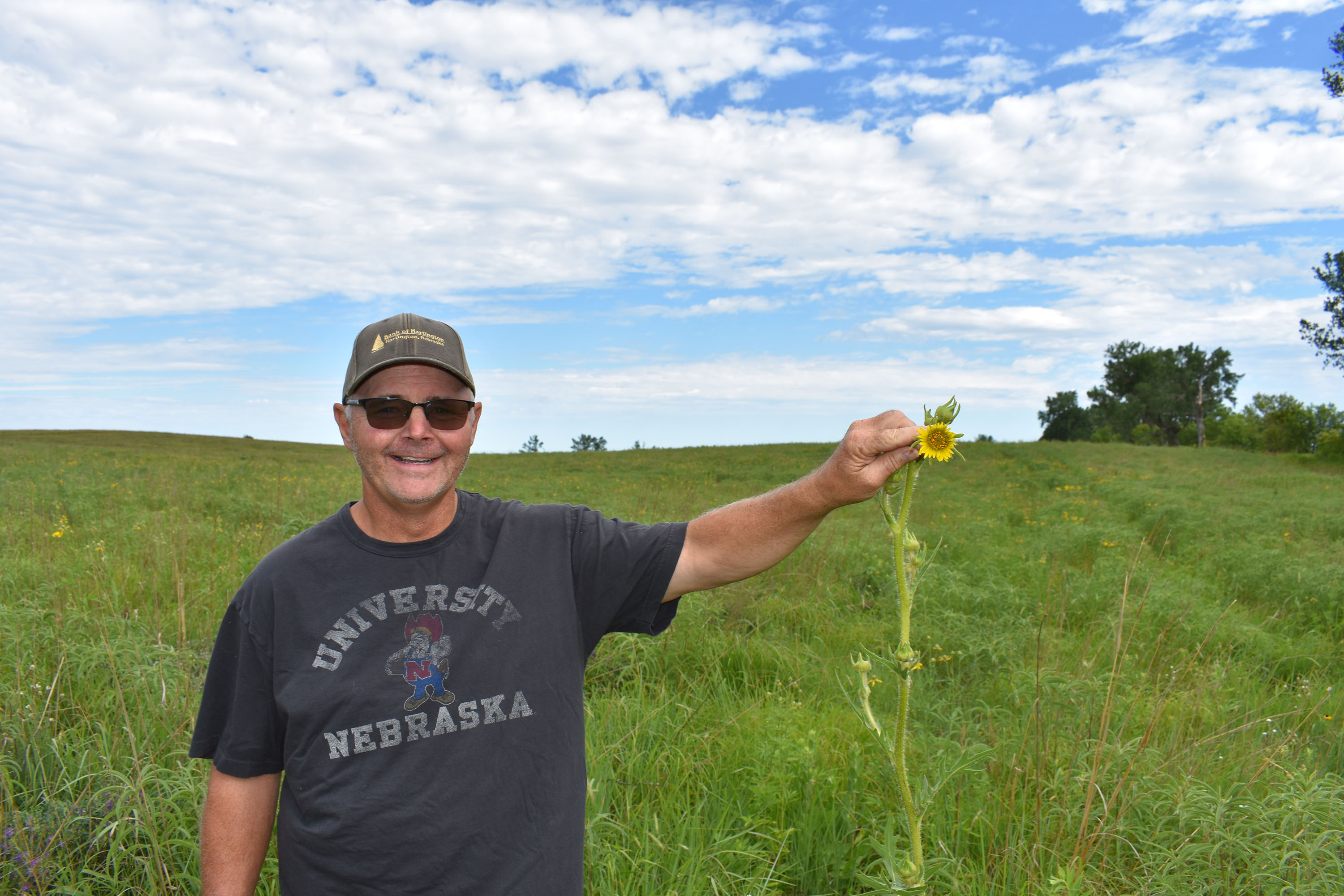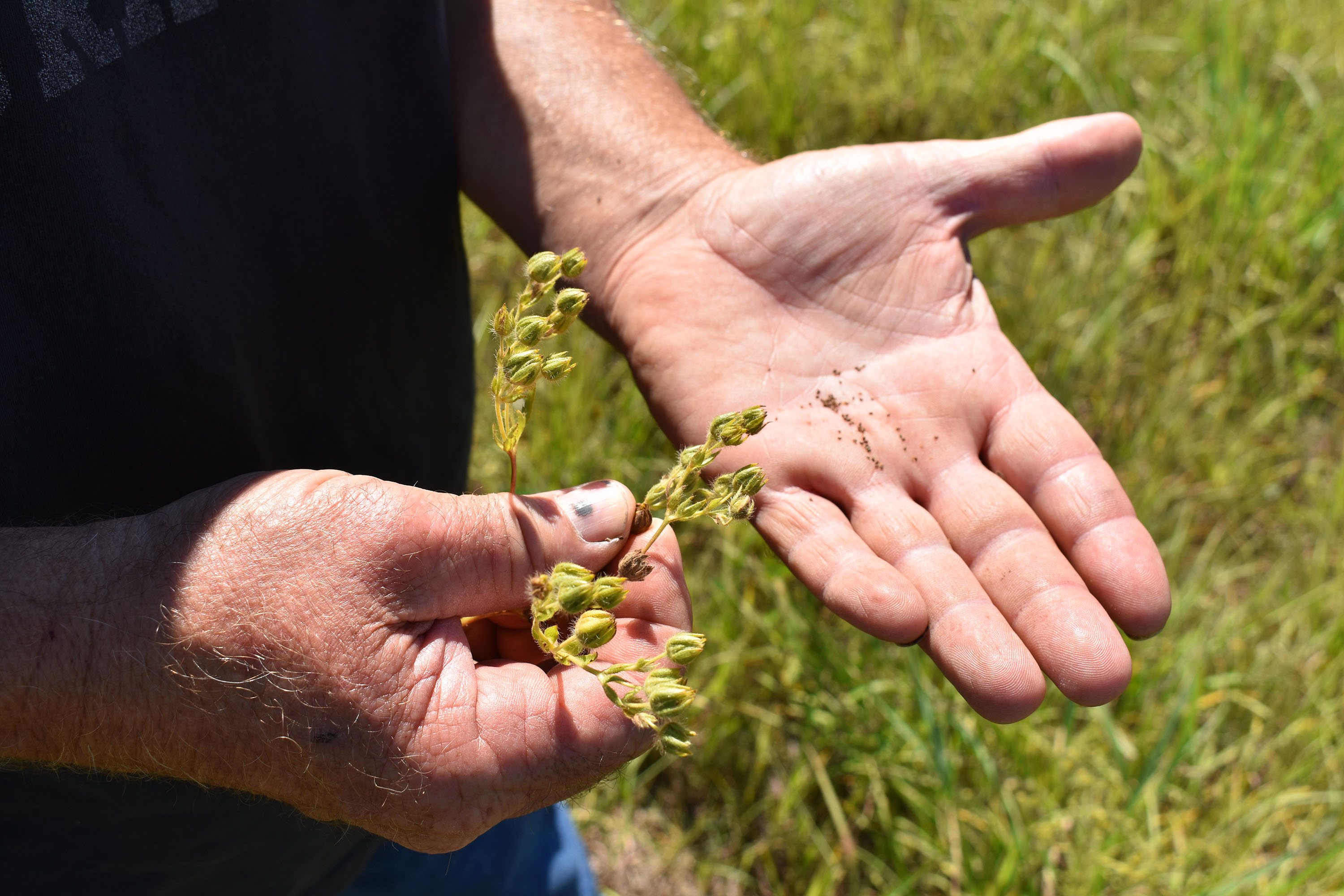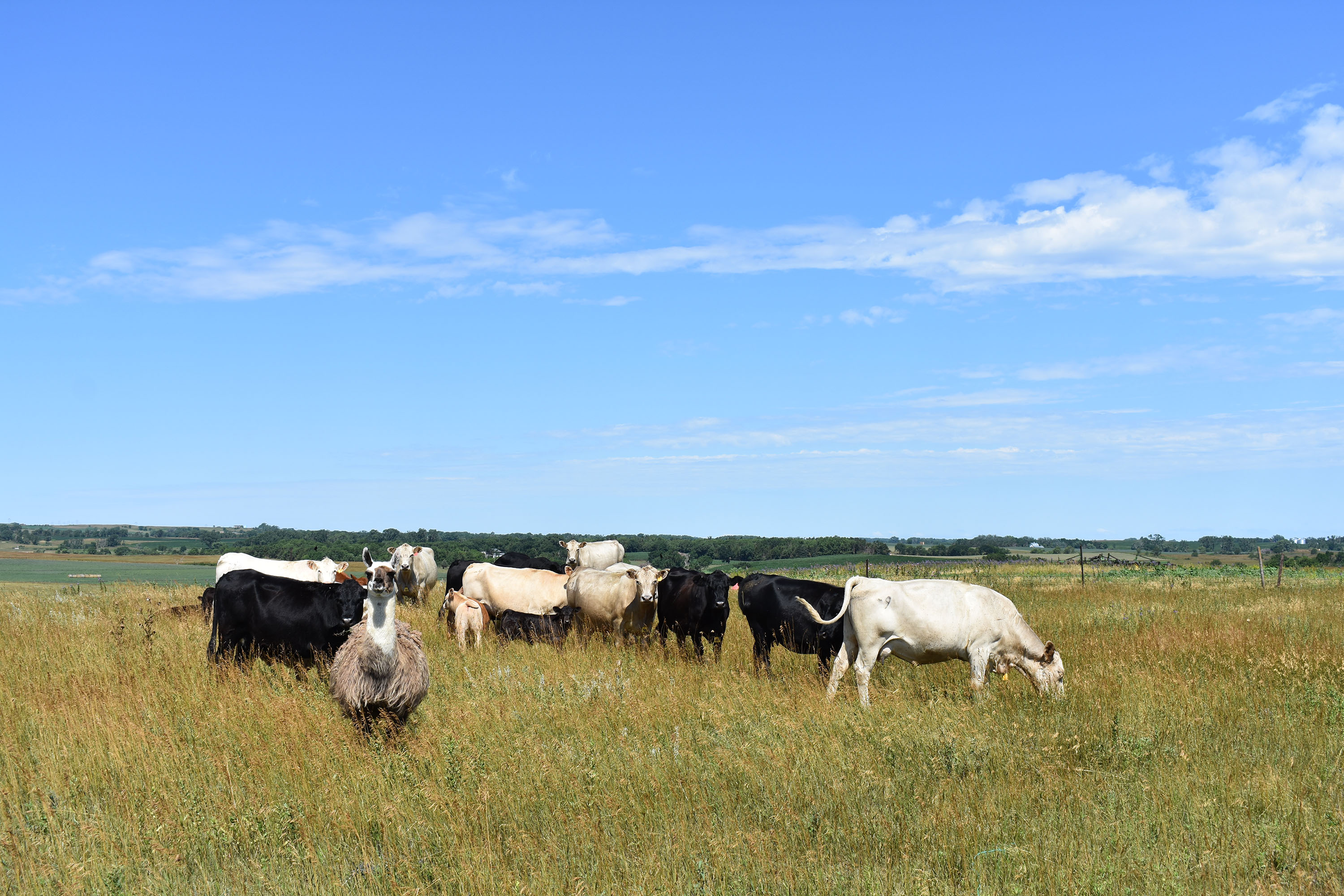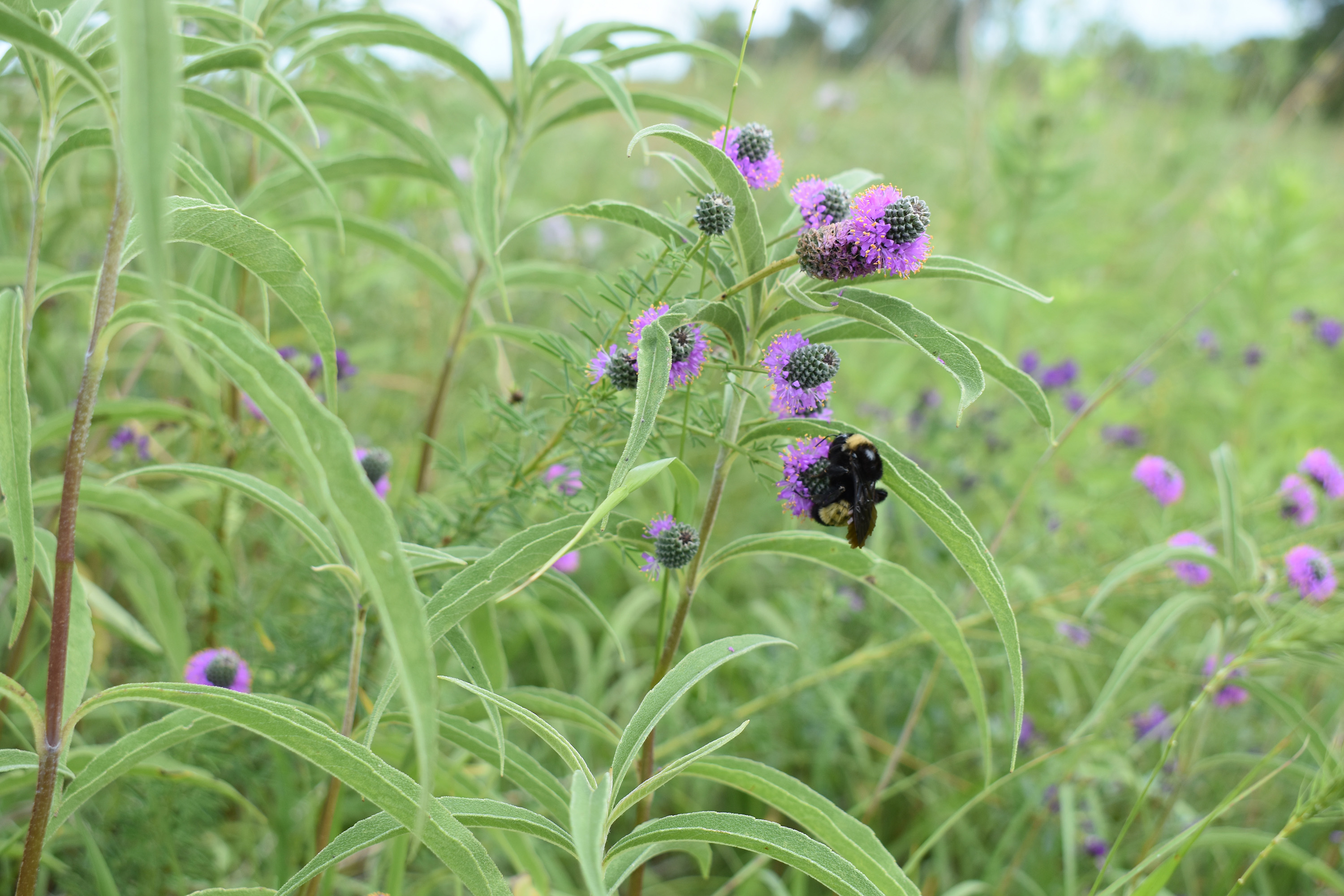This Friday meet Randy and Dayna Klawitter of Verdigre, Nebraska, where they raise corn, alfalfa, and hay, and manage their small cow and bison herds. The couple acquired the land from Randy’s father in the early 1990s and started building the operation from scratch. With a degree in agronomy, Randy knows his native plant species and works hard to ensure the plants that emerge on the property will benefit local wildlife.

“I like plant diversity, it’s one of my favorite things,” Randy said. “This is a very dry area with little rain, so we have to stay on top of things to make sure invasives don’t take over.”
Conservation Reserve Program
Building on Randy’s passion for plant diversity, the couple has worked with USDA’s Farm Service Agency over the years to enroll around 300 acres in the Conservation Reserve Program. In exchange for a yearly rental payment, farmers enrolled in CRP agree to remove environmentally sensitive land from agricultural production and plant species that will improve environmental health and quality.
The Klawitters have implemented five different practices on their operation through their CRP contracts, including farmable wetlands, tree belt, Grassland CRP, rare and declining habitat with pollinators, and native prairie habitat through the Nebraska State Acres for Wildlife Enhancement initiative. Practices in this initiative help restore vital habitat to meet high-priority state wildlife conservation goals.

Randy takes the management requirements that come with holding CRP contracts seriously and is a big believer in the use of prescribed burns for this purpose.
“I use late spring burns when I can and where it makes sense,” said Randy. “It stunts the brome grass, and warm season grasses can fill in better.”
He also does some spot spraying, being careful to only attack targeted areas to remove potential invasive threats before they get a foothold. Because he has livestock, he also uses CRP haying and grazing as a management tool.

Stewards of the Land
FSA staff in Knox County provide guidance and support to help Randy with management requirements and other compliance needs. Randy said he also relies on local natural resource professionals to help him make his CRP even better, working with the Nebraska Game and Parks Commission and USDA’s Natural Resources Conservation Service.
“Randy and Dayna are true stewards of the land. They have exhibited a commitment to improving wildlife habitat in CRP fields and native grasslands for decades,” NRCS District Conservationist Rebekah Jessen said. “Randy isn’t afraid to pick up the phone or stop by the local USDA Service Center when he has a question. You can regularly see him walk in with a plant that needs identified or have questions on management recommendations.”
Randy said the work that comes with managing CRP is worth it when he sees all the deer, pheasants, songbirds, and insects that make their home on their acres.

More Information
Visit local farms, ranches, forests, and resource areas through our Fridays on the Farm stories. Meet farmers, producers, and landowners who are working to improve their operations with USDA programs.
USDA offers a variety of risk management, disaster assistance, loan, and conservation programs to help producers weather ups and downs in the market and recover from natural disasters as well as invest in improvements to their operations. Learn about additional programs.
For more information about USDA programs and services, contact your local USDA service center.
Bobbie Kriz-Wickham is the state communications coordinator for FSA in Nebraska.


